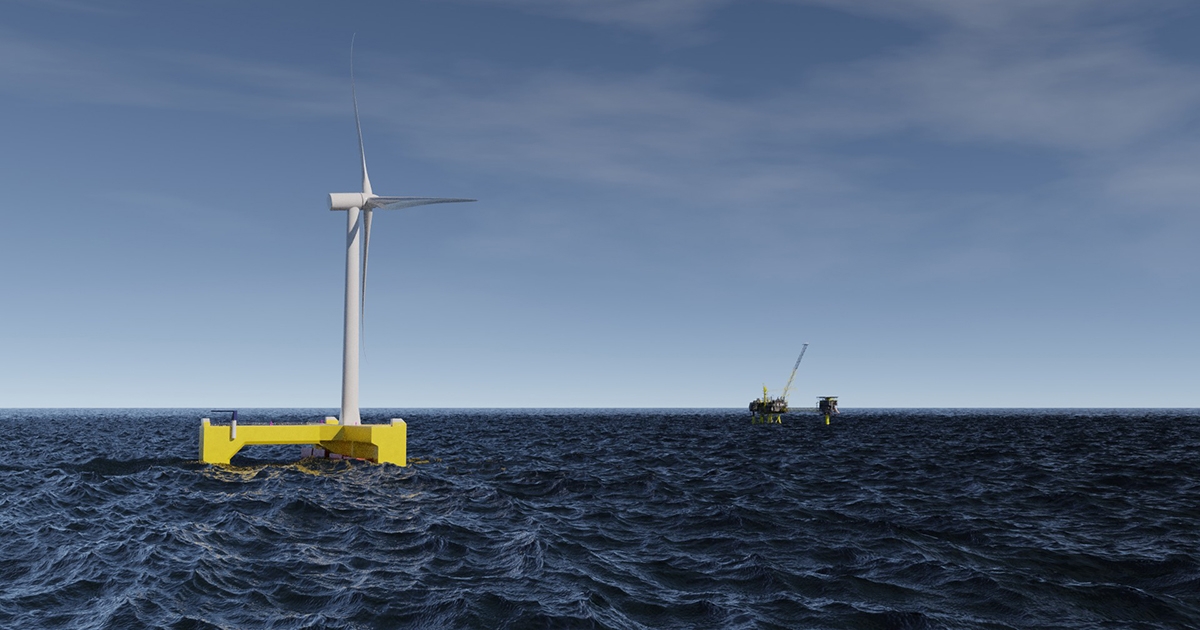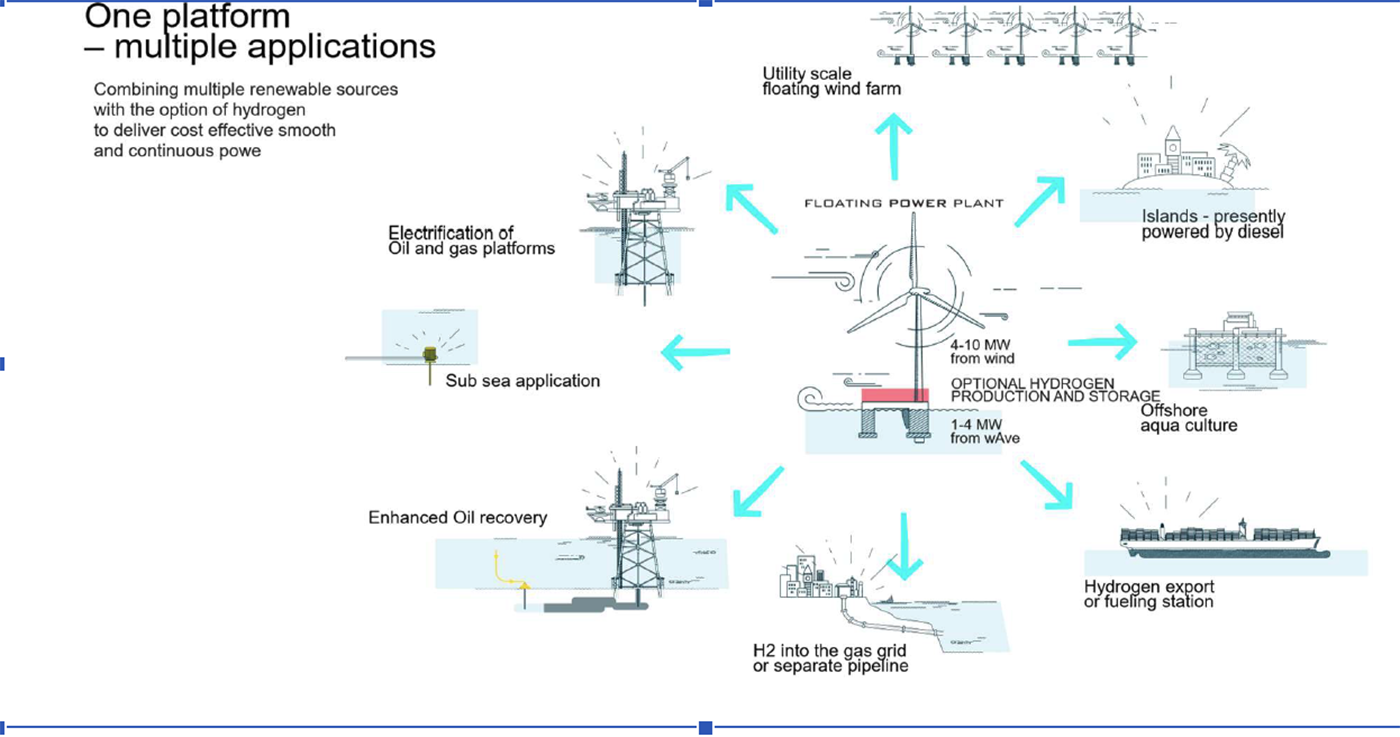Oil & Gas Can Be Much Greener with Floating Wind

Using renewable energy can help the oil and gas industry to reduce emissions while getting a stable, high quality power supply. The renewable energy system can even be used to help the oil and gas facilities with enhanced oil recovery.
 These are the results from a project Floating Power Plant (FPP) has just finished with Lundin Energy Norway, NOV-APL, Semco Maritime, Cefront Technologies and Aalborg University using floating wind- and wave power to support an offshore oil- and gas facility. The project developed three different designs to see if the concepts set up by the partners were usable solutions from both an engineering point of view – but also as a commercial business case.
These are the results from a project Floating Power Plant (FPP) has just finished with Lundin Energy Norway, NOV-APL, Semco Maritime, Cefront Technologies and Aalborg University using floating wind- and wave power to support an offshore oil- and gas facility. The project developed three different designs to see if the concepts set up by the partners were usable solutions from both an engineering point of view – but also as a commercial business case.
The three concepts were:
- Intermittent direct power - a simple integration of floating wind and wave power into an oil and gas facility
- Baseload power - based on the intermittent direct power design, energy storage in the form of batteries and diesel generators have been integrated to provide baseload- or partial baseload power
- Enhanced Oil Recovery - integration of a full EOR-system placed on FPPs platform, enabling 10.000 m3 processed water injection per day with a minimum injection rate of 5.000 m3
Anders Køhler, CEO of FPP, says:
‘We have shown that using renewable energy in the oil and gas industry is a good idea. All three designs proved to be viable and promising from both a technical- and a business point-of-view and they can be used in different commercial situations. We are also excited to see all three concepts being progressed towards commercialization and taken up in TRL, also addressing the challenges identified in the project.’

The project used FPPs platform showing how floating wind is adaptable and can be used in a variety of situations. In the future floating wind can prove to be a great solution to many problems.
Using renewable energy to decrease emissions in the oil and gas industry might sound like an obvious idea, but it is difficult to implement, since adhering to rules and regulations, client requirements, power management and control at the same time could prove to be difficult. When the project started, the rules and regulations were not even clear, so DNV GL were hired to help with establishing a rule set for the various concepts.
Linda Hanken, Field Development Project Manager from the energy company and O&G operator Lundin Energy Norway says:
‘Lundin Energy Norway has held the role as end-client in this project. We see the electrification and integration of renewables into O&G production as a necessity to support the transition towards climate neutrality. We are therefore excited about providing this project with client requirements and input to the integration cases. We find the results from the project very interesting and is pleased to see that technologies for renewable energy are being developed for future use in the O&G business.’
Carsten Nielsen, Senior Vice President in Semco Maritime, an international engineering and contracting company dedicated to projects in the energy sector for both renewables and O&G, was keen to be involved in this project:
‘We have supported this project with the system outfitting design, adaptation of O&M philosophy to the O&G market and input to constructability and how to enable mass production. We are happy to see the project results and especially the base load power solution, which we believe has potential to play an important role in the electrification of O&G production, where we also see a lot of potential for deploying our high voltage competences. This is also why we have extended our partnership with FPP to further explore joint opportunities for this application.’
Anders Køhler, adds:
‘When we started this project, the market was emerging, but since then we have seen a significant increase in interest. This is driven largely by the industry’s net zero production ambitions combined with the ability of developing renewable energy technologies to provide cost efficient, clean power with an operational risk profile similar to the current solutions.’
Facts:
Floating Power Plant A/S, Lundin Energy Norway, NOV-APL, Semco Maritime, Cefront Technologies and Aalborg University were granted 4,79 mDKK by the Danish EUDP program for the project; “De- carbonization of Oil & Gas Production – by cost effective Floating renewable Technologies”.
The project was based on FPP’s combined floating wind and wave technology and developed and adapted new designs and business concepts, for utilization in combination with the extraction of hydrocarbons. This is an emerging market with significant potential.

